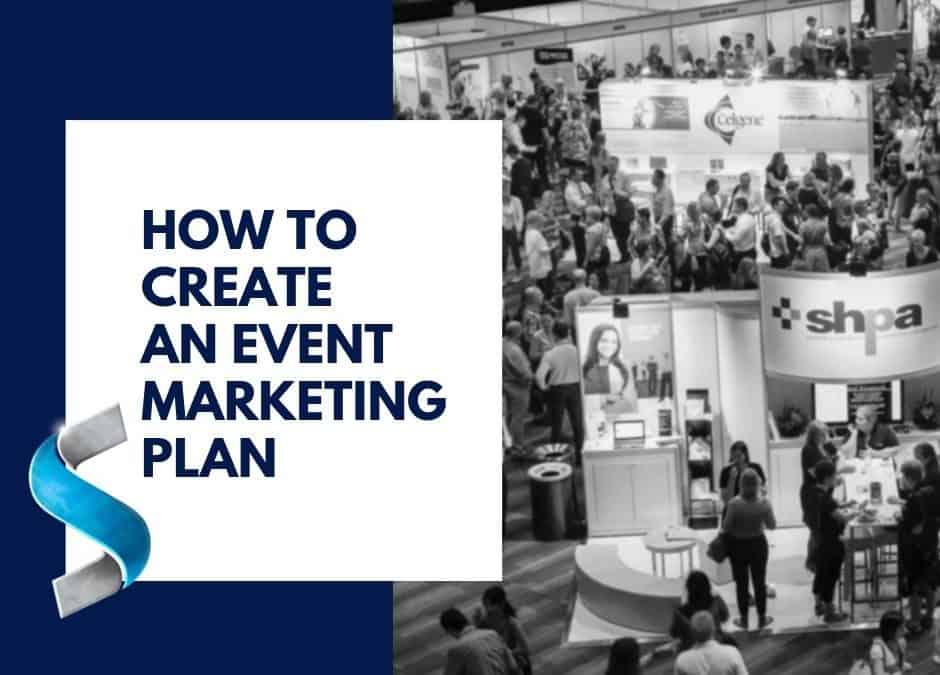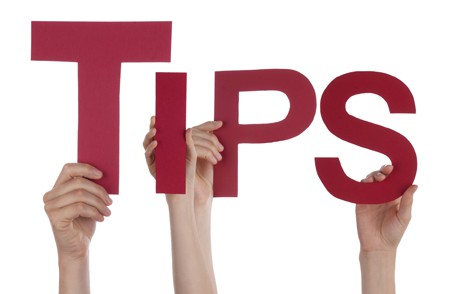Written by Rebecca Hagen, Skyline Displays Australia.
Trade shows and exhibitions are great for your business because they attract masses of potential customers with ready purchasing power. However, they also attract your competitors who are also vying for their business.
In order to be successful you need to have a clear event marketing plan for your next trade show or exhibition. This will be your strategy road map that will help you achieve the objectives that you have in mind for your event. The last thing you want is to invest your time and money into attending a trade show only to watch people walk past your booth.
Below is a quick checklist on how to organise your event marketing efforts in order to draw a crowd to your booth at your next trade show or exhibition.
1. Review your past objectives
Refer to your objectives and results from your last exhibition and identify key areas of strength and weakness. In reflecting on your past events, you can better develop strategies to improve areas of weakness and continue to capitilise on areas of strength. Your previous experience is therefore your biggest asset in setting your new objectives.
2. Set your new objectives
Before you book your space at an event or exhibition, you need to establish a set of goals or objectives. By setting out these objectives, you can work out an action plan on how you will achieve these and work out how you will measure your performance. By accurately measuring your objectives, you will be able to identify areas that require improvement and areas that your company are succeeding in. This will also be the basis and justification for future trade show participation and budget allocation.
3. Set your budget
It’s most beneficial to obtain past financial data when setting your event marketing budgets. Look to what events you previously attended, the budget allocation and the actual expenditure. Review this expenditure so you can:
- Ensure that your Return On Investment (ROI) for each event is accurate
- Shift unproductive costs into more productive areas
- See where you are spent the most and come up with a plan on how best to save money or increase value and ROI
- Determine if there are any events that should be cut from the event schedule
- Determine if your future budget is accurate and sufficient
4. Select the shows to attend
Exhibitions, trade shows and conferences are powerful ways to boost your brand presence and there are plenty to choose from. Do extensive research well in advance and highlight the events that are the best fit for your company and that will attract your key target markets.
5. Lock in your booth space
When you’re looking to book your booth space, you want to choose spaces that are in high traffic areas where the attendees will frequently pass by. However, these spaces are typically quite sought after. As a first time exhibitor at that particular show, you may not get the location you prefer, but getting in early is your best bet.
If you get the choice, try to position yourself away from your competition and any other exhibitors with distracting booths. Likewise, positioning yourself amongst companies with lackluster exhibits may work to your advantage. This is something you might note down from attending the particular show the year prior.
6. Lock in your display
Once you know the space you are working with, it’s time to lock in your display stand. It’s helpful to work with exhibition display specialists and share your goals, budgets, marketing plans and current communications material. It’s also great to have an idea of displays that you like or dislike and do a showroom walk through if you can. Your consultant will then be able to provide you design options and indicative pricing. By communicating your event schedule for the year, you can often save money through choosing versatile displays that will perform well at multiple events.
7. Generate a list of potential attendees and audience
As you plan your event, make a list of people and organisations you are quite certain will want to attend. This will enable you to reach out to them before the event so that you can drum up some buzz and have invested interest from attendees before the show has even begun!
8. Outline your offer
When you have generated your list of potential attendees, you should let them know how they can benefit if they visit your booth at the exhibition.The incentives that you offer can also form the basis of the brand advocacy by your potential attendees. The end result is that more visitors come to your booth.
9. Choose and train your booth staff
If your booth is in a high traffic area and you have an engaging booth display, attendees will gravitate towards your booth wanting to know who you are, what you do and what’s in it for them.
However, what is most memorable from this point on is your booth staff. Your staff need to be professional, educated and engaging both in their appearance and approach. Furthermore, they need to be well aware of the objectives for that particular show and tailor their messaging and tactics to achieve these.Your booth staff have the power to make or break your trade show performance so choose wisely.
10. Promotions (pre-show, at-show)
Pre-show promotions are critical to drumming up interest and excitement about your presence before the show. As discussed prior, formulating a list of potential attendees is a good start. You can also filter your promotions to focus on the specific location of the show. From there the options are endless.
Send out marketing blasts and/or physical mail in the lead up to your event promoting your booth number and offer. It’s critical to promote your presence on your website and blog and social media channels in the lead up to, and during the event. Tag the show and the event to gain maximum exposure and use hashtags to further expand your reach. This will help drive attendees to your booth before the show has even begun and your at show promotions will keep you front of mind.
11. Order your promotional material
If you plan on offering the attendees promotional materials or giveaways, you should order these at least 2 months before the exhibition begins. This will prevent any last-minute hiccups, ensuring that you have enough time to focus on other aspects of the show.
The same goes for the uniforms that your staff will wear at the show. Make sure that you have them beforehand so that your brand can be well represented on the day.
12. Coordinate other suppliers
Coordinate with other suppliers by providing your comprehensive event schedule, objectives and theme. By providing suppliers with this information they can find appropriate solutions and reduce unnecessary expenditure. The suppliers can also provide some input and recommendations to increase your impact at the show. This coordination, therefore, ensures that the run-up to the show is as smooth as possible and within the budget.
13. Arrange travel and shipping
A few months before the event, you need to book your flights, shipping and accommodation. If you leave it too late, you may find that the rates have increased which has the potential to blow out your budget. If you are exhibiting internationally, it’s important to take these steps much earlier and make sure whoever is travelling has the appropriate documentation to do so (visas, passports etc).
14. Post-show follow up
When the show ends, the sales process really starts. Whatever lead management system you have put in place, you will need to review leads, prioritise and follow up. The best bet is to categorise leads as A, B, C in order of importance and have strategies for how you will follow up post show. The most important thing is that you do follow up!
15. Measure your show success
Once you’ve followed up, you will then need to measure your success. Start by referring back to your objectives and record what you actually achieved. Did you do what you set out to do and what can you improve next time around?
These results may also be the justification behind continued participation in future events and increased budgets. On the other hand, if you missed the mark, it may mean you need to revisit your event marketing plan and make changes where necessary.
Event marketing has been one of the most preferred methods in the world of business marketing for decades. In fact, a 2011 event marketing survey by Marketing Profs found that 62 percent of Senior Sales Executives chose event marketing as the discipline that best accelerates and deepens relationships. However, In order for event marketing to be worthwhile and profitable, you must have a clear event marketing plan. We hope these 15 tips will give you the guidance you need to create a solid event marketing plan which is designed to get you results.
By partnering with an experienced exhibition specialist you can communicate your event marketing plan and find the perfect display solution that fulfills your objectives.
Contact Skyline today to get started.









